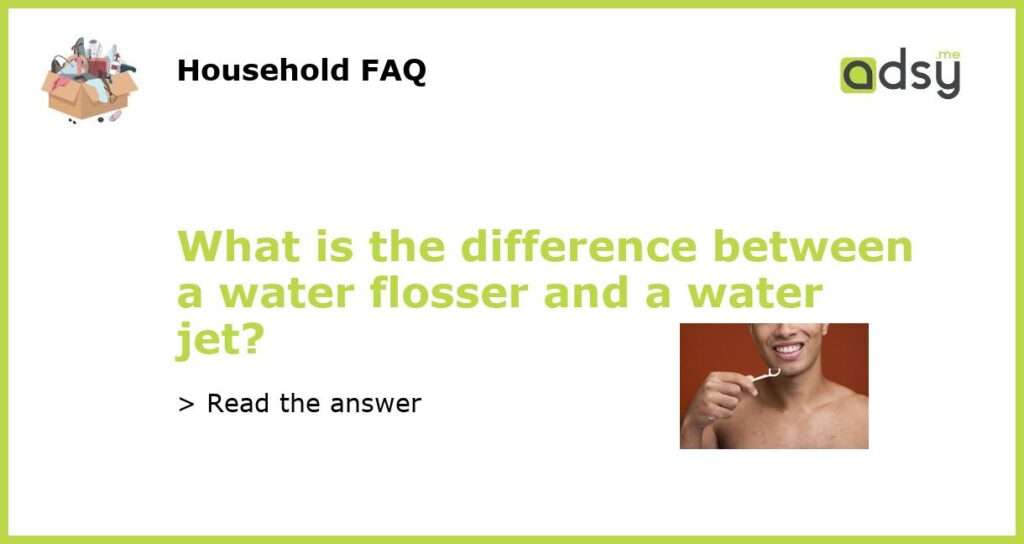Water Flosser vs. Water Jet: Understanding the Difference
When it comes to dental care, many people have heard of traditional flossing and using a water flosser or water jet. However, not everyone understands the difference between these two popular methods. In this article, we’ll break down the differences between a water flosser and a water jet, so you can make an informed decision about which tool is right for you.
What is a Water Flosser?
A water flosser, also known as an oral irrigator, uses pressurized water to remove food particles and plaque from teeth and gums. The device typically has a water reservoir and a motorized pump that delivers the water through a specialized tip.
The water stream from a flosser is designed to mimic the pressure and pulsation of traditional flossing, making it an effective alternative for those who don’t like to use string floss. Additionally, water flossers can be gentler on the gums and are often recommended for people with sensitive teeth and gums.
What is a Water Jet?
A water jet, also known as a water pick, is similar to a water flosser in that it uses pressurized water to remove debris from teeth and gums. However, the difference lies in the intensity and direction of the water stream.
Water jets typically have a more powerful stream of water that can reach deeper into the gum pockets and between teeth. While this can be effective for people with gum disease or deep pockets, it can also be harsh on the gums if used improperly.
Which is Better for Dental Care?
The answer to this question ultimately depends on your individual dental needs and preferences. For someone looking for a gentler alternative to traditional flossing, a water flosser may be the best choice. However, if you have gum disease or deep pockets that require more intense cleaning, a water jet may be a better option.
Regardless of which tool you choose, it’s important to follow proper technique and use the tool as directed. Consult with your dentist to determine the best course of action for your individual dental care needs.






